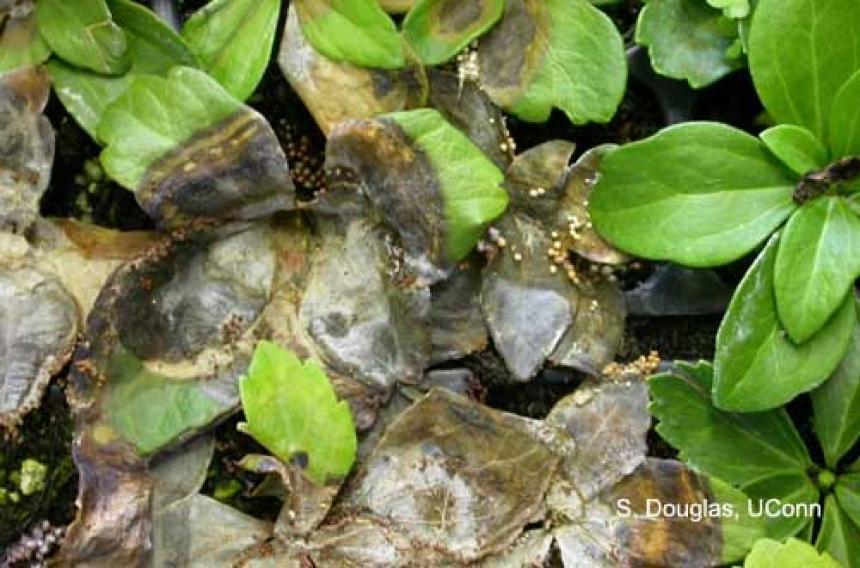Sclerotium crown rot is caused by the fungus Sclerotium rolfsii and is generally more common in more southern regions. Other names for this disease are Southern Blight, Southern Wilt, and White Mold.
Initial above-ground symptoms can include discoloration of lower leaves, wilting, and collapse. These are often followed by plant death. Symptoms are easily confused with other basal stem rots such as those caused by other fungi. However, look for fluffy, fan-like white mycelium (often with a distinct "mushroomy" odor) near the crown on the media or soil to distinguish Sclerotium crown rot. This fungus forms sclerotia, a distinguishing characteristic of this disease. (Sclerotia are compact masses of fungal hyphae that can survive unfavorable environmental conditions.) They are first white, and then darken to tan as they mature. Growers often say they resemble "tiny mustard seeds" that are about .04-.08 inch in diameter
